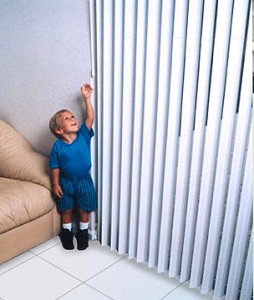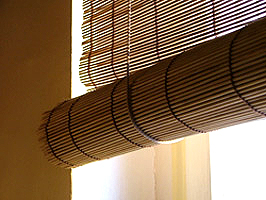2011-09-27: A recent child fatality in Ireland has alerted our population to the common danger of Window Blinds, Shades and Other Window Coverings which are not Child Safe.

.
In Ireland … our Consumer Protection Laws are weak … our National Consumer Protection Organizations are even weaker … and the National Standards Authority of Ireland (NSAI) is under-resourced, and not fit for purpose.
In the European Union (EU) … a work programme, having the aim of eliminating the risk of strangulation and internal asphyxiation due to child accessible window covering cords and small parts, only commenced in the early part of 2011. Refer to this Page on the WebSite of the European Commission’s Directorate General for Health & Consumers (DG SANCO) … http://ec.europa.eu/dgs/health_consumer/dyna/enews/enews.cfm?al_id=1109
.
HOWEVER, back on 15 December 2009 … the United States Consumer Product Safety Commission (CPSC) issued the following Press Release …
CPSC Announces Voluntary Recalls to Repair Millions of Roman Shades and Roll-Up Blinds by Multiple Firms
WASHINGTON, D.C. – The U.S. Consumer Product Safety Commission (CPSC) is announcing that multiple firms are recalling millions of units of Window coverings, including Roman shades and roll-up blinds. These window coverings present a serious risk of strangulation to young children.

CPSC has received reports of five deaths and 16 near-strangulations in Roman shades since 2006, and three deaths in roll-up blinds since 2001. Strangulations in Roman shades occur when a child places his/her neck between the exposed inner cord and the fabric on the back side of the blind or when a child pulls the cord out and wraps it around his/her neck. Strangulations in roll-up blinds occur when the lifting loop slides off the side of the blind and a child’s neck becomes entangled on the free-standing loop or if a child places his/her neck between the lifting loop and the roll-up blind material.
The recalled Roman shades and roll-up blinds were sold by a variety of manufacturers and retailers, including major discount department stores, home improvement stores and window covering manufacturers and retailers. Remedies vary among firms from repair kits to refunds.
“Parents need to make sure there are no accessible cords on the front, side, or back of their window coverings”, said CPSC Chairperson Inez Tenenbaum. “Avoid these deadly dangers by getting the repair kit or installing cordless window coverings in all homes where small children live or visit.”
To help prevent child strangulation in window coverings, CPSC and the Window Covering Safety Council urge parents and caregivers to follow these guidelines:
- Examine all shades and blinds in the home. Make sure there are no accessible cords on the front, side or back of the product. CPSC recommends the use of cordless window coverings in all homes where children live or visit.
- Do not place cribs, beds and furniture close to windows with corded window coverings because children can climb on them and gain access to the cords.
- Make loose cords inaccessible.
- If the window shade has looped bead chains or nylon cords, install tension devices to keep the cord taut.
.
A Table at the end of the CPSC Press Release (15 December 2009) indicated that IKEA was ‘voluntarily’ recalling 3,360,000 Roman Shades, Roller Blinds and Roll-Up Blinds from its stores, nationwide in the USA. Don’t worry … I blinked, and then re-checked that number !
What has IKEA done in its stores, continent wide in Europe ??
.
.
END
